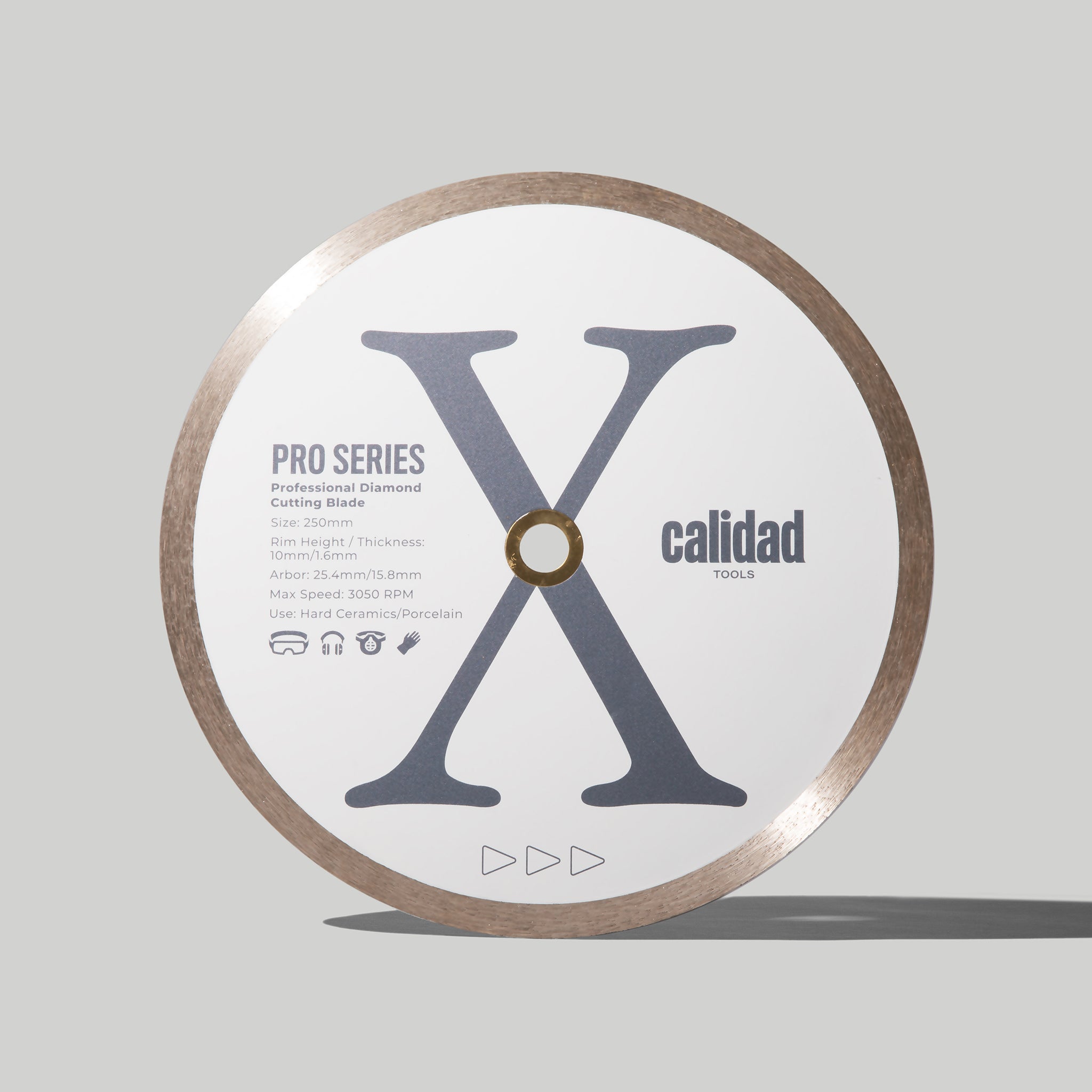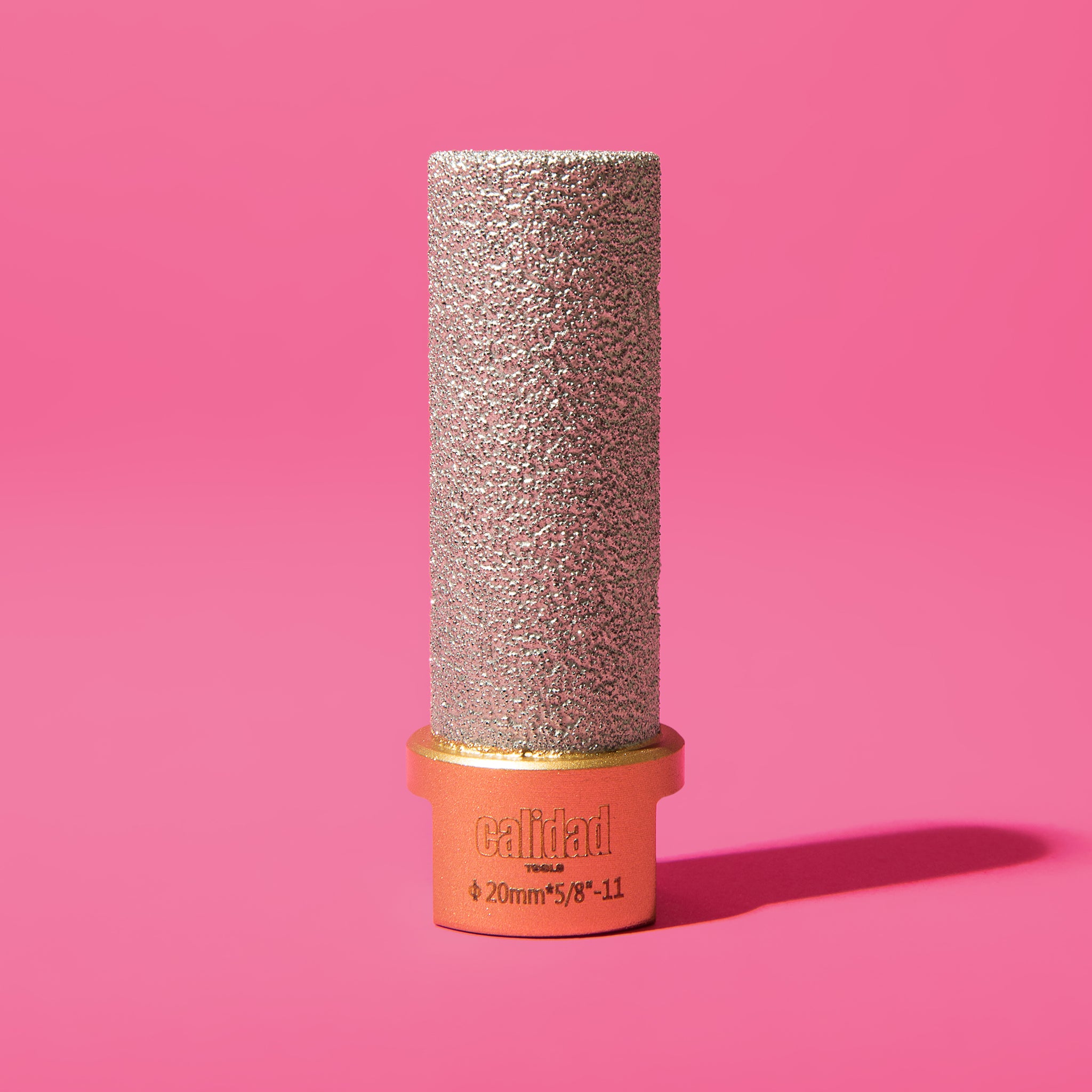Epoxy Paint For Tile - Give Your Ceramic Tile A New Look

Even though tiles are some of the most durable and reliable construction materials, they're still prone to wear and tear. On top of that, they're not the cheapest to replace.
Thankfully, there's an easy way to freshen up your old tiles.
You can simply put a coat of epoxy paint, and voila - you have brand-new tiles!
Painting over old tile is a cheap and easy way to update their look - it's also eco friendly to boot.
In this article, we'll cover everything you need to know about painting tile, whether with water-based acrylic or epoxy paint.
Why You Should Consider Painting Old Tiles

There are quite a few reasons why you should paint your tiles. The biggest one, of course, is that it's much cheaper than replacing them all. The labor costs alone will set you back way more than the paint, and you don't have to hire anyone to do it.
Now, you might be thinking that painted tiles require a bit more maintenance. Let's clear that out right away. Painted tiles are just as easy to clean and maintain as regular tiles - just try not to scratch them with sharp stuff.
Oh, and you can paint both walls, floors, and even bathroom floor tile. Believe it or not, some concrete paints are more than durable enough to handle high foot traffic areas like living rooms.
Painting Tile Vs. Tile Reglazing Vs. Retiling

When considering options for refreshing your tiles, the painting comes out as a cost-effective alternative to retiling or tile refinishing. Unlike retiling, which involves costly and time-consuming demolition, painting doesn't require any demolition, making it a more budget-friendly choice.
Even seasoned renovators often opt to leave tile installation to professionals due to its complexity. Reglazing is definitely a more permanent solution, but it demands significant time, effort, and cash. It entails removing tiles, cleaning them with acid-based solutions, applying epoxy glaze, and reinstalling them, adding to the complexity of the process.
Paint colors offer a wider spectrum of options compared to tile colors, allowing for greater flexibility in home decor schemes. With painting, homeowners have the freedom to choose from a plethora of hues to achieve their desired aesthetic.
While painting offers a viable solution for tiles in good condition requiring cosmetic enhancement, it may not be suitable for tiles with structural issues such as cracks or mold. In such cases, retiling or reglazing may be preferable for achieving long-lasting results.
How To Paint Tiles: Calidad Tools Paint Guide

When it comes to tile painting, the process is fairly uniform across different types of tile paint. They're all made to withstand the rigors of daily use, resisting water, stains, and scratches. However, factors such as drying time and surface compatibility vary between them.
Epoxy paints, formulated with epoxy resin, offer robust protection when applied to surfaces. They typically require a 24-hour drying period, making them ideal for high-traffic areas like kitchens and bathrooms where durability is paramount. One-paint epoxy simplifies the process with its single-coat application, suitable for areas with less foot traffic such as bedrooms or hallways.
This type of tile paint is particularly user-friendly, requiring minimal effort without the need for multiple coats. Two-paint epoxy combines two distinct paint components in one, offering convenience with its one-step application process. Widely available in stores, it's a popular choice for various painting projects.
Two-process epoxy paint, requiring both primer and top coats, offers superior durability albeit with a longer drying time of up to 48 hours. While more time-consuming, it's well-suited for larger surfaces like bathroom walls or floors where resilience is essential.
The Pros And Cons Of Using Epoxy Paint On TIles
As is the case with just about everything in life, using epoxy paint to paint your tiles has its pros and cons.
There are quite a few advantages to using epoxy paint on your tile:
- It’s very easy to apply and you can do it yourself
- It can look pretty stunning if done right
- It will breathe new life into old ceramic tiles
- Epoxy paint is extremely durable and resistant to abrasions
- This paint is durable enough for floors, walls, bathtubs, and even toilets.
- Maintaining epoxy-painted tiles is pretty easy.
Here are the cons of using epoxy paint on your old tiles:
- Epoxy paint for tiles is nearly impossible to remove. This means that if you change your mind mid-painting, you’ll have to retile the space you’re working on.
- It’s absolutely crucial you mix the resin and hardener perfectly. Otherwise, the epoxy paint won’t dry properly.
- There’s a very limited amount of time to paint your tile before the paint starts hardening
- To ensure the paint job looks good you need to remove the grout which takes quite a lot of time.
What Tools Do I Need To Paint Tiles With Epoxy Paint

For painting tiles effectively, you'll need the right tools to get the job done with precision and efficiency. Here's a list of essential tools and supplies you'll need:
- Paint Brushes and Rollers - Depending on the size and intricacy of the area you're painting, choose between paint brushes for detailed work or rollers for covering large areas quickly and evenly.
- 5 5-gallon buckets for mixing - You’ll need something to mix the paint in. 5-gallon buckets are perfect for mixing epoxy paint. Just bring two in case the first batch you mix up starts hardening before you finish painting.
- Decorative elements - To make the epoxy paint pop up a bit more, you can mix in some paint flakes and glitter.
- Epoxy Additives - You can extend the time it takes for the epoxy paint for tiles to harden by mixing in a bit of pot lifetime additives.
- Putty Knife - A putty knife comes in handy for smoothing out surfaces, removing excess paint, and fixing imperfections before painting.
- Electric Mixer - Consider using an electric mixer, like the Rubimix-9, to ensure thorough mixing of paint and primer for optimal results.
- Tack Cloths - Use tack cloths to wipe away dirt, dust, and debris from the tile surface before painting, ensuring a clean and smooth finish.
- Painters Tape - You’ll need painter's tape to protect any surfaces you don’t want painted with epoxy.
- Sandpaper - Prepare the tile surface by sanding it lightly to create a better bond between the paint and the surface, promoting adhesion and longevity.
- Grout - Have grout on hand to repair any damaged or missing grout joints before painting, ensuring a seamless and professional-looking finish.
- Personal Protective Equipment (PPE) - Protect yourself from harmful fumes and splashes by wearing gloves, coveralls, and a respirator while painting. Eye protection is also advisable to prevent irritation or injury.
How To Paint A Tile Floor

To start off painting your tile floor with epoxy paint first thoroughly clean the tile surface to remove any dirt, grime, or grease. Next, protect surrounding areas such as baseboards, door jambs, and fixtures like toilets or sinks by carefully applying painter's tape.
This will prevent any accidental spills or splatters from marring adjacent surfaces. Prepare your epoxy paint according to the manufacturer's instructions, ensuring it is thoroughly mixed before pouring it into a paint tray or pan. If you’re worried the paint will harden, you can add an additive to the mix.
You can add any textures or paint flakes into the epoxy mix if you want the floor to pop out. If using a two-process epoxy paint for high-traffic floors, be prepared for a longer curing time. Allow ample time for the paint to dry completely before allowing foot traffic on the newly painted surface.
With proper preparation and the right materials, painting your tile flooring can be a rewarding and cost-effective DIY project that breathes new life into your space.
How To Paint Bathroom And Kitchen Wall Tiles With Epoxy Paint

When it comes to sprucing up your kitchen or bathroom, painting those worn-out tiles can be a game-changer. But before you break out the brushes, there's some prep work to be done. Start by scrubbing down those kitchen tiles with a heavy-duty degreaser.
With all the cooking oils and grease splatters, these tiles can be real grime magnets. Once you've tackled the grease, give 'em a good rinse with water. Now, onto the bathroom. Those tiles often bear the brunt of soap scum and mineral buildup. Grab a tile cleaner that packs a punch and scrub away the grime until those tiles shine like new.
Once your tiles are squeaky clean, it's time to bust out the two-part epoxy paint. Follow the instructions on the can and lay it on thick. But remember, patience is key. Let that paint cure properly before you go leaning on your newly painted tiles. When it comes to what type of epoxy paint is best for bathrooms, I recommend any that are rated for exterior use.
This is because epoxy paint designed for use outdoors is usually waterproof and has better non-slip properties. Besides that, you should be extra careful when painting around drains. Ensure the tiles around those are well painted because water runoff can chip off paint over time.
How To Paint Tile Around Doors And Windows

When it comes to painting around doors and windows, a little extra care goes a long way. Here are some handy tips to keep those paint accidents at bay:
- Seal off doors and windows tightly before you start painting to avoid unwanted splatters or smudges.
- Reach for a roller with a long handle to breeze through those large tile areas. For the nitty-gritty details, like edges and corners, grab a trusty brush.
- When delicacy is key, opt for a foam brush around windows and doors. They're gentler on those sensitive surfaces.
- Don't forget your trusty painter's tape. It's your best friend for keeping those lines clean and tidy, ensuring a professional finish every time.
Epoxy Paint For Tile - Final Thoughts
Tile painting offers an affordable and eco-friendly alternative to costly renovations. Whether you're looking to refresh your kitchen backsplash or revamp your bathroom floor, epoxy paint provides a durable solution that's easy to apply.
By choosing the right paint colors and following proper techniques, you can achieve professional-looking results without breaking the bank.
Before you start your tile paint job, you should come and check out our store. You can find everything a DIY or pro tiler would need - from high-quality tile saws and trowels to tile spacers and protective gear.












